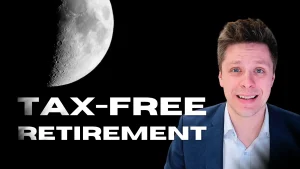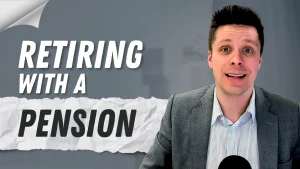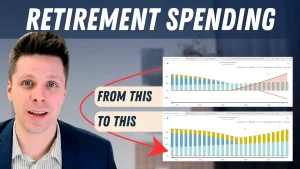What if you could live off your portfolio’s interest without spending any of your principal?
Wouldn’t that be something to know that your original capital is still there every time you look at your portfolio?
With interest rates higher than they’ve been in years, this seems more possible than ever.
However, this can be a very dangerous strategy.
Tom’s Situation
I recently met with a gentleman that we’ll call Tom, and we helped him put together a retirement withdrawal plan.
Now a big part of a retirement withdrawal plan is to determine how the portfolio will be invested. Tom had been investing throughout his working life, but now that he was retiring, he had heard that he should become very conservative with his retirement portfolio.
Since he was no longer adding to his accounts, using guaranteed investments like GICs or high-interest savings accounts would help guarantee his future income.
Tom had $ 1 million dollars and needed $40,000 per year from his portfolio. His credit union just so happened to be offering him a GIC that would pay him 4%.
This seemed like a no-brainer as the 4% GIC would provide him with the $40k he needed, and his $1 million dollar account would remain intact.
However, there was one factor that Tom wasn’t considering: Inflation
Decrease in purchasing power
To simplify this example, let’s say Tom could keep earning 4% on a GIC for the remainder of his retirement.
After one year, there are no issues. His portfolio made $40k, and he withdrew the same amount.
But after factoring in inflation, his return and withdrawals would stay the same in the future, but his purchasing power would decrease.
The latest Stats Canada Update for inflation came in at 3.1%.
Assuming the inflation rate remains the same throughout Tom’s retirement as well, he starts to fall behind very quickly.
After one year, he would need $41,240 from his portfolio, to be able to buy the same goods as his original $40,000.
After ten years, that would have increased to over $54k, and after 20 years, were now at over $73k.
If Tom is still withdrawing the same $40k per year, his money won’t go nearly as far.
Yes, Tom could start drawing on his capital to keep up with inflation, but that wasn’t the point. He wanted only to spend the interest and keep his capital intact.
At this point in our conversation, we went back to Tom’s original comments about becoming very conservative now that he was retired.
In Tom’s eyes, he viewed risk as the fluctuations in his portfolio if he remained invested. The best way to get rid of this risk would be to move to conservative investments that would not have any fluctuations at all.
However, by doing so, Tom was introducing a new risk, which was the permanent loss of his purchasing power over time.
Market Fluctuations vs Inflation
As we can see, conservative investments aren’t a free lunch either, so what’s the bigger risk, market fluctuations or inflation?
When I think of retirement, I don’t think about the preservation of capital; I think about growing income so that your standard of living doesn’t diminish.
Now, I do agree with Tom, that it does make sense to become somewhat more conservative in retirement, as withdrawals will occur, but I would never stop investing.
Let’s go back to 2013 and assume that Tom had retired then, and let’s say he had invested his entire portfolio in the following investment. This is a moderate investment, with 60% in stocks and 40% in conservative investments.
If Tom withdrew $40,000 per year every January and increased his withdrawals by 3.1% every year to keep up with inflation (Psst Inflation was actually a lot lower than this at the time), today he would have over $1.25 million dollars.
Now, past performance is not an indicator of future performance, but by investing in something that will grow at a higher rate than inflation, you can increase your income to keep up with inflation and grow your capital at the same time.
If we look at the annual returns for this investment, Tom’s worst year would have been a loss of over 7.5%.
Is that trade-off worth it? I’ll let you decide.





